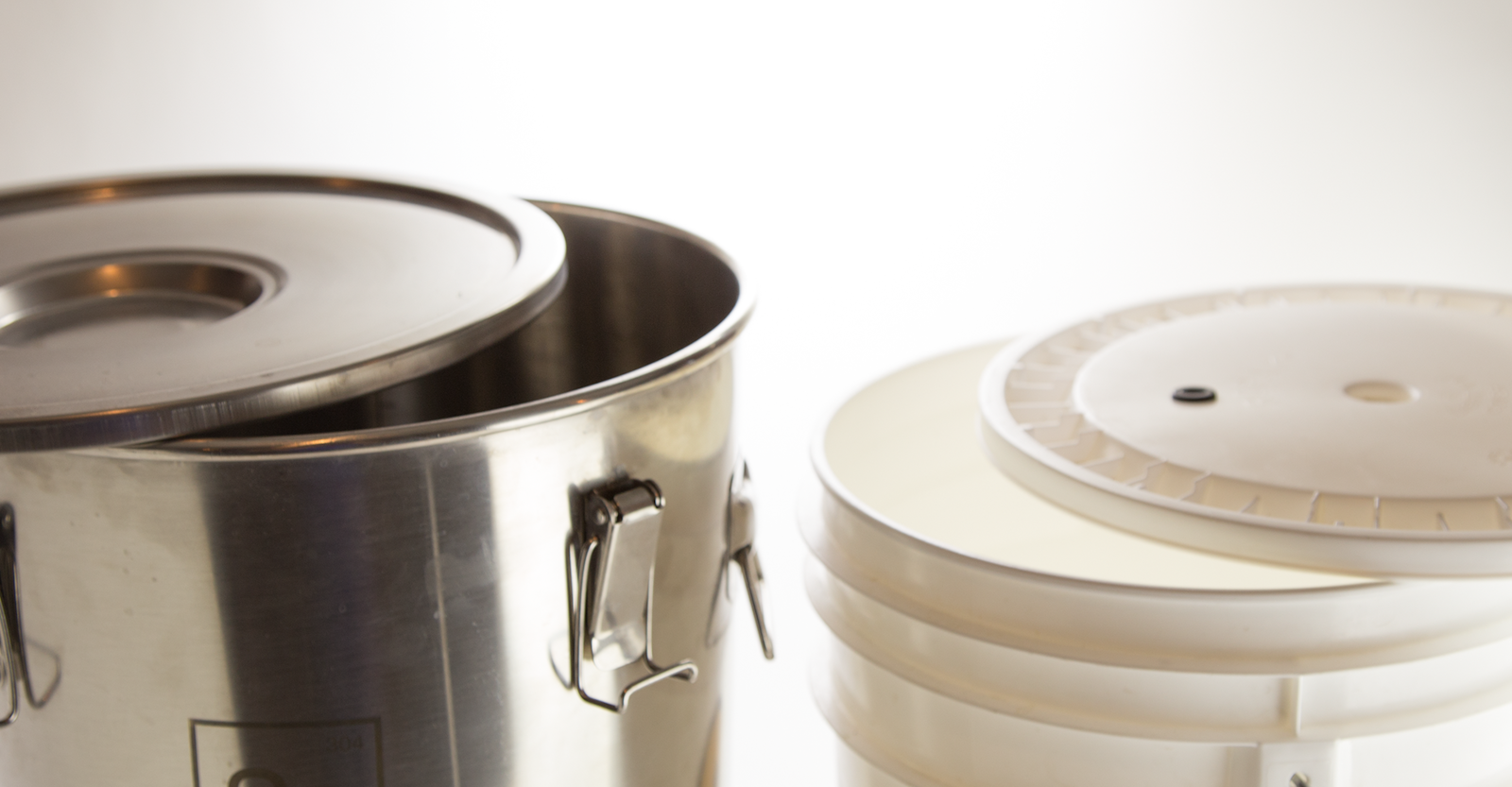Whether your brewing journey began ten years ago or ten days ago, you’ve had it hammered into you over and over and over: Sanitation is the single most important priority in ensuring great beer. And part of keeping things sanitary is keeping them closed to the environment. That’s why we put lids on buckets and stoppers in carboys, and it’s one reason why the airlock is designed to let gas out without letting air in.
But despite the potential risks for contamination, some brewers insist on fermenting in open containers. Open fermentation is just what it sounds like: Rather than seal everything up with an airlock in a nice carboy, bucket, or cylindroconical fermentor, you leave the top open so that the wort, and eventually beer, remains exposed to the environment.
Why on earth would you want to do this? Well, there are a few reasons.
Tradition
This was how all beer was fermented at one time or another. And some modern commercial breweries continue to ferment in open containers: Anchor Brewing of San Francisco, California; Samuel Smith Brewery of Tadcaster, England; and the Schneider Weisse Brewery of Kelheim, Bavaria, are but a few of the most famous breweries who practice open fermentation.
Harvesting
Top-cropping, or skimming Kräusen from the top of actively fermenting beer, is an excellent way to reuse yeast and be assured of its health and vitality: No trub, no hops particles, and no cumbersome yeast washing procedures. Simply grab a sanitized spoon and mason jar, and steal some yeast.
Esters
Open fermentation is often conducted in wide vessels that are much shallower than your typical cylindroconical or carboy. This shape promotes the formation of fruity esters, which is desirable for many British ales and myriad Belgian styles. And in Stan Hieronymus’s Brewing with Wheat, Hans-Peter Drexler of the Schneider Weisse brewery notes that exposure to oxygen encourages the production of 4-vinyl-guaiacol, which is responsible for Hefeweizen’s signature clove character.
Offgassing
Leaving the fermentor open to the air lets sulfur and other nasty compounds readily escape rather than be re-absorbed back into the beer.
Unfortunately, open fermentation isn’t quite as simple as leaving the lid off your brew bucket or the stopper out of your carboy. To get the most from your fermentation, you’ll want to conjure up a wide, shallow vessel: Think steam table trays and restaurant sinks. The idea is to mimic a coolship, which is more like a big pan than a vertical fermentation tank (see “Spontaneity: Prospecting for Bugs” for a DIY article on building your own coolship).
The overall shape is important because fermentor geometry plays a surprisingly significant role in the character of the finished beer. In fact, the monks of Abbaye d’Orval conducted numerous tests when they moved Orval production from open fermentors to cylindroconical vessels. They made adjustments to keep the new beer as faithful to the old one as possible, and primary fermentation time decreased from five days to four.
If you’d like to try open fermentation at home, do so in the cleanest spot in your house, and avoid drafts that might carry dust into your open vat of beer. Brewers with fermentation chambers should meticulously sanitize the interior before entrusting it with an open container of fresh wort. And don’t forget to sanitize all of your equipment just as you normally would. Yes, it’s open fermentation, but you don’t want to invite an infection.
Regardless of how you proceed, it’s essential that the beer be racked to a secondary vessel as soon as primary fermentation is complete in order to avoid unnecessary oxidation and reduce the risk of contamination. Much of the allure of homebrewing is the ability to experiment, and open fermentation offers just another way to directly explore the wonderful world of beer.

